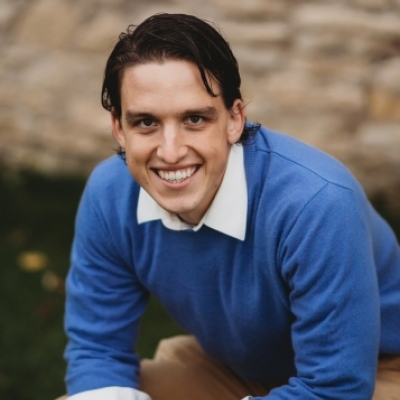Classical education has surged in popularity, with 264 new schools cropping up since 2019, a host of think pieces analyzing its growth, and state-level policy shifts that bolster its expansion. I found myself a proponent of classical education via a roundabout path, backing my way into it after following the research on effective instruction.
In many ways, my discovery of classical education resembles an amusing passage from G.K. Chesterton’s theological classic Orthodoxy. He imagines a seafarer, caught in a storm, who runs aground on England’s shores and mistakenly believes that he has discovered a new land. Each verdant forest and rolling hill appear to him as a new London, when in reality he’s a few miles outside old London. To Chesterton, the story analogizes his conversion. He step by step built what he thought was a unique philosophical framework only to realize he had constructed the outlines of orthodox Christianity.
My discovery of classical education followed a similar trajectory. While teaching, I grew enamored with instructional research and (often in these pages) gradually dismantled my commitment to dubious beliefs, including student-directed curriculum, project based learning, soft-on-consequences theories of discipline, differentiation, and the workshop model for literacy instruction, to name a few. In their place, research led me to such things as knowledge-rich curriculum, worked examples, low-stakes quizzing, direct instruction, and lots of memorization, discussion, and writing.
Lo and behold, I looked around and found myself on the shores of classical education. The research that I thought had led me to novel theories of learning placed me but a few miles outside of old education. That is a long way to the question posed in the title: Yes, classical education has all the elements of a research-based education.
In visiting a number of classical schools and conferences in recent months, I’ve seen many aspects of effective instruction. Elementary teachers practiced phonemes with their charges. Administrators told me about the importance of well-established routines and behavior systems. The Hillsdale Barney School Initiative posts its curriculum online and would make any knowledge-rich or phonics advocate cheer.
The canonical texts of classical education reference many instructional best practices. For example, Mortimer Adler’s The Paideia Proposal emphasizes the importance of didactic instruction (what researchy types call direction instruction). And Susan Wise Bauer’s The Well-Trained Mind discusses the need to furnish the minds of children with facts, pictures, stories, and other such knowledge—which sounds an awful lot like schema theory.
Such similarities between research-backed practices and classical education shouldn’t surprise us. Our institutions and traditions don’t appear ex nihilo. Rather, they emerge from trial and error and from generations of inherited knowledge. “Well, that’s just the way we’ve always done it” might well be a good reason to keep doing something that way.
Each element of a traditional classroom serves a purpose. Raised hands allow classroom discussions to flow without devolving into a cacophony of voices, bells and passing periods allow swift and uniform transitions, while desks in rows keep attention forward and temptations to distraction minimal.
It’s unsurprising then that research confirms that “the way we’ve always done it” actually works pretty well. If it didn’t, people would have started doing it differently!
Accordingly, it amuses me whenever I see supposedly innovative schools try to in fact do things differently, only to revert to traditionalism. As I’ve written about here before, the concept of “open classrooms” crops up every few years, wherein students move from learning station to learning station at their whim in giant rooms with flexible seating. And every time, schools end up rebuilding walls, or failing that, teachers use whiteboards and bookshelves to create makeshift boundaries.
With a foot in both worlds, I’ve noticed that the research-based wing of education reform—such as the systems of “no excuses” charter schools or organizations such as researchEd—and the world of classical education have much in common; they share similar ideas and advocate for similar instructional and curricular norms, even if they use different language. If anything, modern proponents of research-backed instructional practices have merely rediscovered an old-fashioned liberal arts education and rebranded it with philosophically positivist vibes.
That being said, while classical education certainly has all the right ingredients for a research-backed educational initiative, the movement would benefit from studies of their particular systems of schools.
For example, charter schools such as KIPP have opened their doors to researchers, allowing them to run various lottery and comparative studies to see how these schools stack up against traditional public schools. The resulting data have made for some of the most forceful arguments in defense of charter schooling. Were Hillsdale’s Barney Schools or the system of Great Hearts Academies to do the same, I’d wager that such research would find they are indeed quite effective and so provide incontrovertible evidence to bolster, justify, and expand the classical education movement.
And if research vindicates that bet, the classical education movement could prove a powerful force in American education. Where some “no excuses” charter systems have compromised on their core beliefs, classical education’s foundation in objective virtues and the Western tradition could provide it a stronger base upon which it can weather political pressures. Moreover, its popularity could positively influence the broader public school system away from its current obsessions with identity solipsism and politically charged content and back towards a traditional, liberal arts education.




